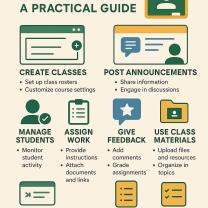Is grammar and Language Arts the same?
Grammar and Language Arts are related concepts, but they are not the same. They refer to different aspects of language and communication, and they encompass a range of skills and topics. Here's a clarification of the distinction between grammar and Language Arts:
Grammar:
- Grammar is a specific component of language that deals with the structure, rules, and conventions governing the use of words, phrases, and sentences in a language.
- It focuses on the correct use of elements such as parts of speech (nouns, verbs, adjectives, etc.), sentence structure, punctuation, and syntax.
- Grammar is concerned with the mechanics of language, including the proper formation of sentences and the rules governing verb tense, subject-verb agreement, and the like.
- It is a subset of Language Arts, focusing on the technical and structural aspects of language.
Language Arts:
- Language Arts, on the other hand, is a broader term that encompasses a wide range of language-related skills and disciplines, including reading, writing, listening, speaking, and critical thinking.
- Language Arts includes grammar but goes beyond it to encompass areas such as literature, composition, rhetoric, vocabulary, communication, and comprehension.
- It incorporates both the technical aspects of language (like grammar) and the creative and expressive aspects (like writing essays or analyzing literature).
- Language Arts education typically includes the study of literature, writing techniques, reading comprehension, public speaking, and more.
In summary, while grammar is a specific aspect of language that deals with the structural and rule-based elements of language, Language Arts is a more comprehensive field that encompasses various language-related skills, including grammar. Language Arts education is broader and covers a wide range of language and communication abilities, while grammar is just one part of that larger domain.
Grammar vs. Language Arts: Is There a Distinction?
Yes, there is a distinction between grammar and language arts. Grammar is the study of the rules and principles that govern the use of language. It includes topics such as word order, sentence structure, punctuation, and capitalization. Language arts, on the other hand, is a broader term that encompasses all aspects of language use, including grammar, reading, writing, and speaking.
Language Arts and Grammar: Exploring the Relationship
Grammar is an important component of language arts, but it is not the only one. Language arts also includes other skills, such as reading, writing, and speaking. These skills are all interrelated, and they all contribute to our ability to communicate effectively.
For example, in order to write a clear and concise essay, we need to have a good understanding of grammar. However, we also need to be able to organize our thoughts logically and to express ourselves in a way that is easy to understand.
Grammar and Language Arts: Shared Elements and Distinctions
The following table shows some of the shared elements and distinctions between grammar and language arts:
| Element | Grammar | Language Arts |
|---|---|---|
| Focus | The rules and principles that govern the use of language | All aspects of language use, including grammar, reading, writing, and speaking |
| Skills | Word order, sentence structure, punctuation, capitalization | Reading, writing, speaking, listening |
| Goal | To communicate effectively | To develop a deep understanding of language and to use language effectively in a variety of contexts |
Conclusion
Grammar and language arts are both important for effective communication. Grammar provides the foundation for language use, while language arts helps us to develop the skills we need to use language effectively in a variety of contexts.













